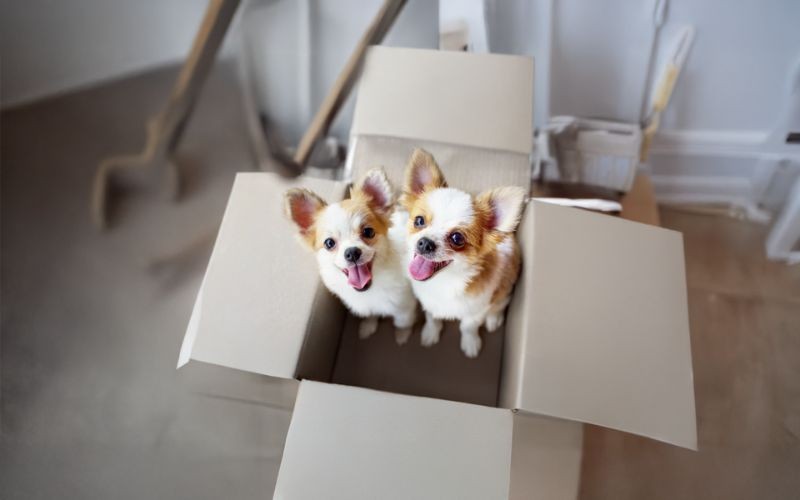
Small Dog, Big Personality: How to Respect the Tiny Tornado on Four Paws
Think small dogs are just lap-warming, purse-riding, low-energy fluffballs? Think again.These little dynamos are often bursting with personality, curiosity, and more zoomies than you’d expect from something that fits in a tote bag. But despite their tiny stature, they deserve the same respect, understanding, and freedom as their larger canine cousins, and that starts with how we approach them.
Get on Their Level (Literally)
Imagine being greeted by a creature twenty times your size, looming over you with outstretched arms and a high-pitched squeal. Terrifying, right? That’s exactly how many small dogs experience our well-meaning but overwhelming greetings. While we might be excited to say hello, from their perspective, it’s all a bit much.
Instead of towering above them, try crouching down or sitting beside them. Let them approach you on their terms. Interactions at eye level feel much safer for small dogs and help build trust right from the start. Plus, you get to enjoy a front-row seat with those legendary skeptical side-eyes they love to give while deciding if you’re worthy of their attention.
Small Doesn’t Mean Lazy
Sure, they’re tiny. But no, they don’t come with an off switch. Breeds like Chihuahuas, Miniature Pinschers, and Jack Russells may look dainty, but many have energy levels that could rival even the most athletic working dogs. They crave stimulation, adventure, and proper exercise, not just a quick stroll to the corner or a few laps around the living room.
When their need for physical and mental activity isn’t met, boredom quickly takes over. That’s when you might start noticing excessive barking, destructive chewing, or what some frustrated owners call a “bad attitude.” The truth is, what often gets labeled as behavioral problems is simply a case of a very smart, very bored dog looking for something to do. Regular walks, puzzle toys, training sessions, and playtime aren’t just nice extras; they’re essential to keep your small dog balanced and happy.
Treat Them Like Dogs (Because That’s Exactly What They Are)
It’s tempting to treat small dogs like fragile little accessories. After all, they fit perfectly in our arms, and it’s easy to carry them everywhere. But behind those big eyes and tiny paws is a real dog with real dog needs. Overprotecting them or constantly carrying them can actually do more harm than good, preventing them from learning how to navigate the world confidently.
Small dogs benefit enormously from having the freedom to explore, make choices, and engage with their environment. Let your Yorkie sniff every single tree on the block. Take your Papillon to an agility class and watch them shine. Give your Dachshund a safe place to dig to their heart’s content. Small in size does not mean small in spirit and allowing them to be dogs is one of the best gifts you can give them.
Socialization: The Secret Ingredient
Just like their larger counterparts, small dogs need proper socialization to feel secure and adaptable in different situations. This means more than just meeting other dogs at the park. Socialization includes exposure to new environments, sounds, people, and experiences. A small dog who gets used to the world around them from an early age is far less likely to become fearful or reactive later on.
When it comes to playtime with other dogs, a little supervision goes a long way. Every dog has a different play style. Some love to chase, others enjoy wrestling. By observing their preferences and interactions, you can ensure your dog is playing with compatible friends. While small dogs can absolutely have fun with bigger dogs, rough play can easily become overwhelming if not monitored. The goal isn’t to find a playmate that matches your dog’s size, but one that matches their energy, communication style, and comfort level.
Why Picking Them Up Isn’t Always the Best Idea
Our instincts often tell us to scoop up a small dog at the first sign of trouble, but this well-meaning reflex isn’t always helpful. Being lifted into the air can leave your dog feeling vulnerable and out of control, especially if they’re already anxious. On top of that, being off the ground limits their ability to communicate with other dogs using natural body language.
If your dog seems uneasy in a situation, a better option is to calmly lead them away while keeping their paws firmly on the ground. This allows them to stay engaged with their environment while still feeling safe, without the added stress of being suddenly airborne.
In Short?
Respect the fluff. Celebrate the zoomies. And always remember: small dogs may take up very little physical space, but they’re more than capable of filling your entire heart, your home, and, let’s be honest, most of your couch.

